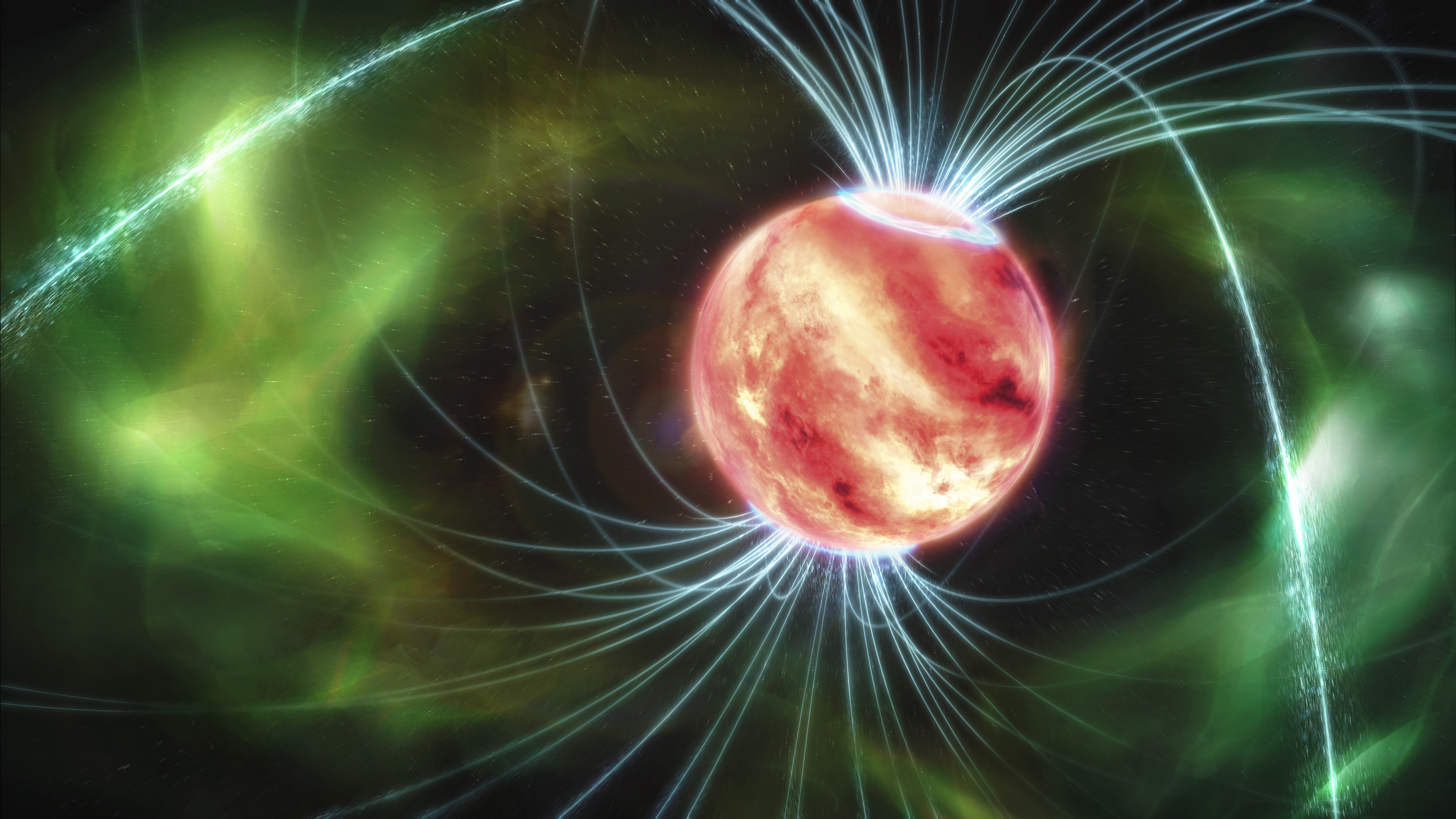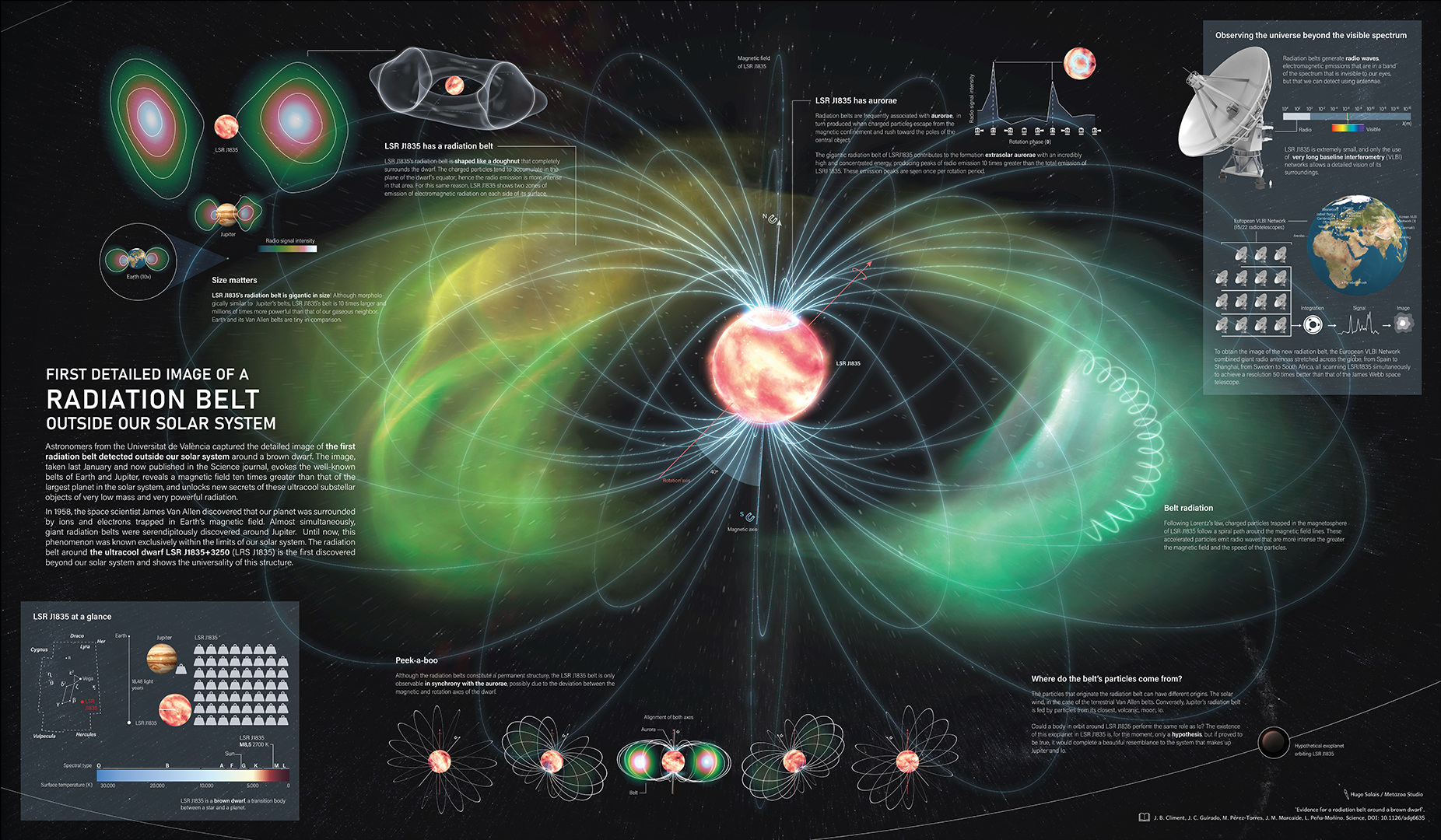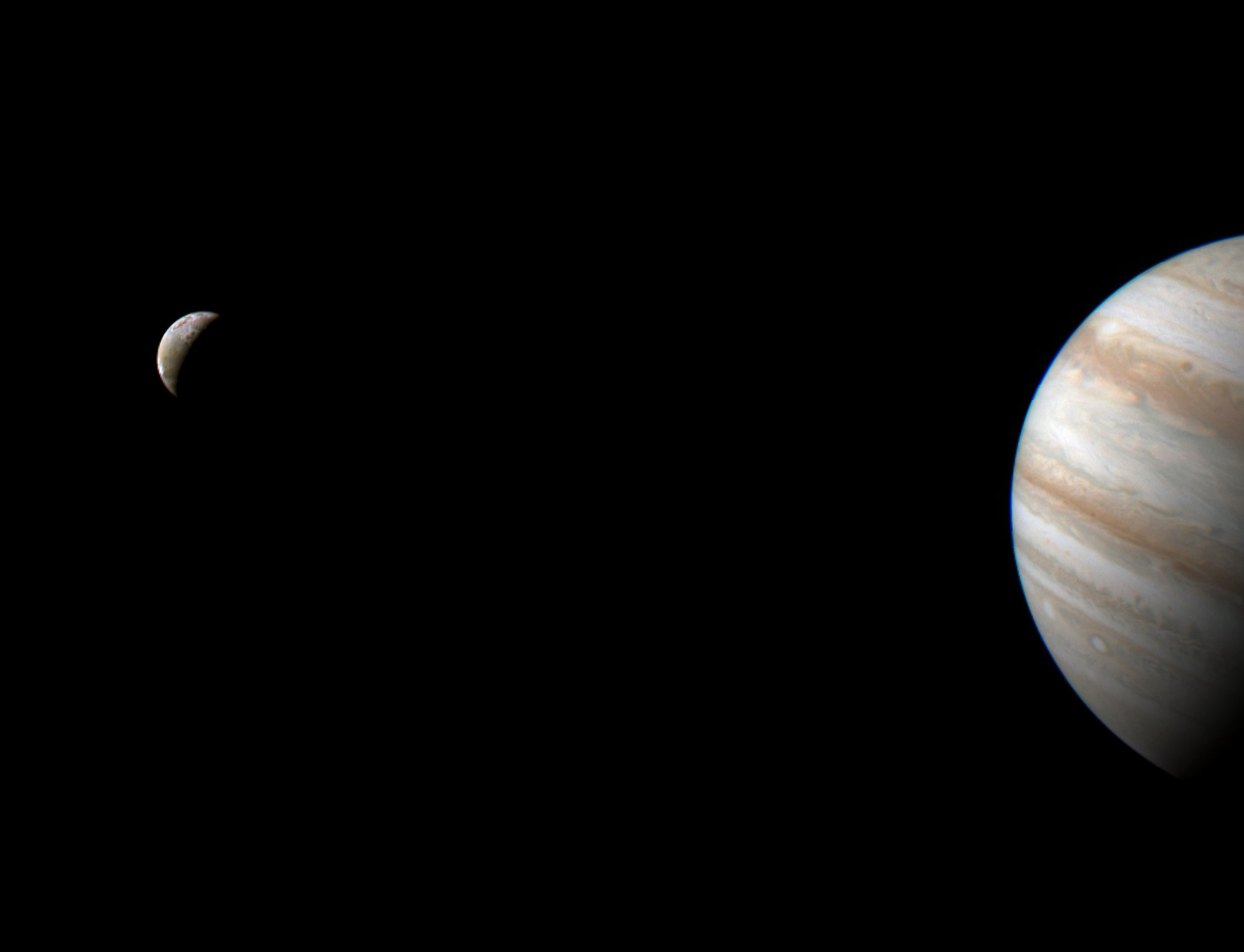'Failed star' with radiation belt could be a big deal for astronomy. Here's why
This strange world also quite possibly hosts a hidden exoplanet.

In 1958, shortly after launching the first United States satellite, scientists made a striking discovery about planet Earth. Encircling the rocky orb we call home, tons of energetic protons and electrons appeared to ceaselessly zip around, forming particle streams that couldn't exactly be explained.
Soon, these streams would become known as Earth's radiation belts — and over the years, they'd earn quite a reputation. For instance, radiation belts are known to endanger astronaut crews and pose a threat to humanity's orbital devices. Later on, these belts would be found encapsulating other worlds inside our neighborhood too, like Jupiter. Just this year, in fact, scientists announced a belt was identified surrounding an entity outside our neighborhood for the first time — and not only that, but around one of the most perplexing objects detected to date: A brown dwarf, or "failed star."
On Thursday (Aug. 24), one of two science teams to independently observe this brown dwarf belt presented us with key measurements they made of the phenomenon, with a resolution about 50 times better than that of NASA's James Webb Space Telescope.
"This is the first object beyond the solar system where a radiation belt has been detected," Juan Bautista Climent, an astronomer at the Universidad Internacional de Valencia, told Space.com. "This discovery also proves that radiation belts not only can appear in planets, but also in brown dwarfs, showing the universality of this structure."
Related: 'Failed star' brown dwarf imaged in nearby star cluster (photos)
Not quite massive enough to be a star, but still too heavy to be a planet, brown dwarfs are something of an enigma for astronomers studying them. The one studied by Climent and his team, rocking a classic space name of LSR J1835+3259, is no exception.
"Objects like LSR J1835+3259 represent the bridge between planets and stars," Climent said. "Their radio emission, hence, includes some characteristics of both."
Breaking space news, the latest updates on rocket launches, skywatching events and more!
However, it was actually those wonky radio emissions that helped the team discover that this particular brown dwarf seems to be donning a radiation belt like our own planet does — well, actually, it's a bit closer to the ones around Jupiter. More on that in a bit.
Diving into some discovery details: As Climent noted, LSR J1835+3259 was kind of the perfect target for researchers to study, as it's only about 18.5 light-years away from us (which is immensely close, cosmically speaking) and exudes enough radio emission data to employ a technique known as very long baseline interferometry (VLBI).
In a nutshell, VLBI links up multiple telescopes spread out across Earth, forming a huge virtual instrument. All those scopes look at the same source simultaneously, collecting signals while measuring things like differences in signal arrival times and such. Altogether, it's like having a giant, Earth-sized telescope gazing into space.
"Radio emissions unveil structures and shapes that are often obscured in visible light," Climent said. "It's like gaining a new set of eyes, and with them we can map out the sprawling arms of galaxies, trace the paths of high-speed particles around magnetic fields and even peer through cosmic dust clouds."
Interestingly, this is actually how scientists with the Event Horizon Telescope captured the first-ever direct image of a black hole.
"We used the European VLBI Network (EVN) to achieve a resolution 50 times better than that of the James Webb Space Telescope and found that the radio emission from LSR J1835+3259 has a morphology akin to that of Jupiter’s and Earth’s radiation belts," Climent said.
The other team that identified LSR J1835+3259's belt used a similar technique, but with a different VLBI network known as the High Sensitivity Array.
"We were — and still are — exploring the frontiers of what radio observations can tell us about the universe," Climent said. "We wanted to apply this powerful technique to probe the surroundings of brown dwarfs."
Without VLBI, he explains, the brown dwarf studied would only look like a regular old star we see in the sky — merely a point of light.
Why are brown dwarf radiation belts a big deal?
Before we get into some science implications, allow me to explain how striking a brown dwarf with a radiation belt truly is. It's easy sometimes to forget that deep space news is truly about stuff rooted in the reality we live in. So, if we could look at LSR J1835+3259 without succumbing to the vacuum of space, here's what we'd probably see.
"Firstly," Climent began, "our 'radio eyes' would be blinded by the auroras which are almost 10,000 times brighter than Jupiter’s."
If we could manage to get past that issue, to put it lightly, we'd be able to see the very fast rotation of LSR J1835+3259's photosphere, or visible surface, completing a whole rotation in just under three hours.
Meanwhile, there would be powerful emissions coming from a donut-like shape around the brown dwarf, Climent explained, which would be the radiation belt.
Or, as he puts it, the belt would look like a dance of trapped charged particles bouncing between the brown dwarf's northern and southern hemispheres and following a spiral path: "What a great spectacle!"
But of course, beyond offering us a pretty mind-bending mental scene, this brown dwarf has tons to tell us about the universe we live in.
LSR J1835+3259 had already taught astronomers quite a bit. In fact, it is also the first object beyond the solar system where auroras were detected.
"This work shows that part of the radio emission in brown dwarfs can be produced in a very similar way to the Jovian case: through a radiation belt and auroras," Climent said. "We can now leverage the knowledge gathered through the years of Jupiter observations and apply it to other objects beyond the solar system, like LSR J1835+3259, to better understand their surroundings and also their interiors."
Further, Climent suggested an interesting scenario for this brown dwarf's surroundings based on the team's data: Maybe it hosts an exoplanet like the sun hosts our Earth or — because it's in the middle of the star and planet itself — like Jupiter hosts moons.
"If true, it would complete a beautiful resemblance to the system that makes up Jupiter and its volcanic moon Io," Climent said.
Putting Earth into perspective
Right now, scientists across the globe are working toward a future where regions of the universe untouched by human eyes finally fall within our reach. One tool that could help us see farther and more sharply, Climent said, is the Square Kilometer Array, a network of radio telescopes designed to reveal the secrets of smaller and more remote objects across the cosmos, including exoplanets.
And, among other things, exoplanet hunters wish to know whether worlds beyond our solar system have the right materials to host life as we know it — or maybe life as we do not.
"Knowing about the magnetic conditions of exoplanets is really important to figure out if they could support alien life," Climent said. "The kind of radiation around these new planets plays a big role in whether life could survive there or not."
Going forward, the team hopes to observe the brown dwarf they've zeroed in on in greater detail, as well as confirm whether or not that potential exoplanet really exists. But basking in the glow of this latest discovery, the researcher reflected on how studying the depths of space puts Earth into perspective.
"This discovery coincided with the most beautiful gift I have ever received: My first son," he said. "In the future, I would like to tell him a thousand stories about the universe but, at the same time, remind him that this small planet that we all inhabit is a great treasure we must look after."
A paper on this work was published Aug. 24 in the journal Science.

Monisha Ravisetti is Space.com's Astronomy Editor. She covers black holes, star explosions, gravitational waves, exoplanet discoveries and other enigmas hidden across the fabric of space and time. Previously, she was a science writer at CNET, and before that, reported for The Academic Times. Prior to becoming a writer, she was an immunology researcher at Weill Cornell Medical Center in New York. She graduated from New York University in 2018 with a B.A. in philosophy, physics and chemistry. She spends too much time playing online chess. Her favorite planet is Earth.


